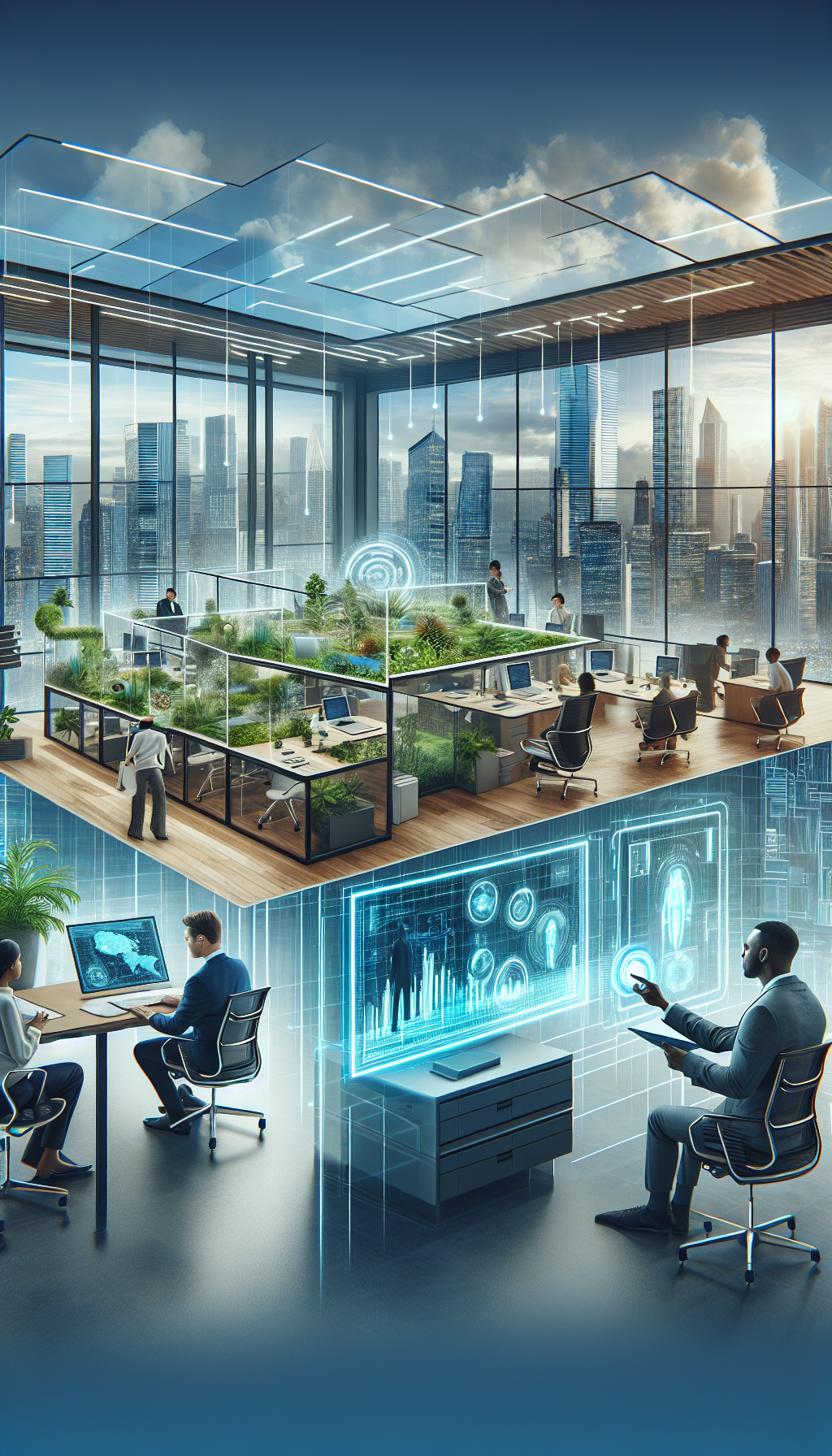Analyzing the Future of Office Space Utilization in America
Shifts in Work Culture
The pandemic fundamentally altered the landscape of work, leading to the rapid adoption of remote work and hybrid models. A significant portion of American employees have expressed a preference for flexible arrangements, with many wanting the option to work from home at least part of the week. According to a survey by McKinsey, 58% of workers in North America have the opportunity to work remotely. This shift presents both opportunities and challenges for office space utilization in America.
Redefining Office Spaces
As companies adapt to these changes, the traditional office space must be redefined. Instead of conventional cubicles, many organizations are now focusing on collaborative workspaces. Open-layout designs, breakout rooms for team meetings, and areas for brainstorming sessions are expected to take precedence. This is supported by a CBRE report, which indicates that companies are pivoting towards environments that promote collaboration and creativity rather than merely serving as places for individual work.
The Rise of Hybrid Work Models
Hybrid work models, which combine in-office and remote work, are becoming increasingly popular. Many businesses are adopting flexible policies allowing employees to choose their working style. According to Gartner, 47% of organizations anticipate allowing employees to work remotely at least part of the week. This model presents both strategic opportunities, like cost savings on real estate, and operational challenges related to management and collaboration.
Technological Innovations in Office Spaces
Technology plays a crucial role in redefining office spaces. The integration of advanced tools and platforms enables seamless communication between remote and in-office employees. Companies are increasingly investing in smart office systems that monitor energy usage, track occupancy, and enhance the overall employee experience. Tools like Slack, Microsoft Teams, and Zoom are becoming staples for office communication, while IoT devices ensure that in-office resources are effectively utilized.
Flexible and Co-Working Spaces
The growing demand for flexible work arrangements has resulted in the expansion of co-working spaces across America. These spaces cater to freelancers, small businesses, and even large corporations that require temporary project-based work environments. Companies like WeWork and Regus have thrived in this climate, offering not just physical space, but also services that foster networking and collaboration. According to IBISWorld, the co-working space industry has exhibited substantial growth, creating a dynamic ecosystem that promotes flexibility.
Sustainable Office Designs and Practices
Sustainability is becoming a significant concern in office space design and utilization. As companies increasingly prioritize environmental responsibility, green buildings will shape the future of office real estate. Features such as energy-efficient lighting, sustainable materials, and advanced HVAC systems are becoming the norm. Additionally, organizations like the U.S. Green Building Council encourage businesses to consider LEED (Leadership in Energy and Environmental Design) certification when designing new office spaces.
Space Optimization Strategies
As companies navigate hybrid and remote work models, optimizing existing office spaces is critical. Many firms are adopting activity-based working strategies, which consist of creating diverse work areas that cater to different tasks—quiet zones for focused work, collaborative platforms for teamwork, and informal areas for social interaction. A study from SpaceIQ reveals that businesses could save up to 30% on real estate costs through optimized space utilization.
Impact on Commercial Real Estate
The demand for traditional office space is shifting, leading to changes in the commercial real estate market. While some investors remain bullish on multi-purpose spaces that can adapt to varied uses, others are cautious about the future of large, single-use office buildings. As vacancy rates increase in some urban centers, landlords are reimagining their properties, potentially transitioning them into mixed-use developments that combine residential, retail, and office spaces.
The Importance of Employee Well-Being
Creating a work environment that prioritizes employee well-being is essential for companies aiming to attract and retain talent. As part of the redesign of office spaces, businesses are incorporating wellness areas, fitness facilities, and amenities that promote a healthy work-life balance. Workspaces that focus on mental health initiatives, such as providing quiet spaces for relaxation or stress management resources, are poised to become crucial elements of modern office design.
Responding to Diversity and Inclusion Needs
The future of office space utilization must also address the needs of a diverse workforce. Organizations are prioritizing inclusivity by designing spaces that accommodate various work styles and preferences. This encompasses everything from offering accessible workstations to providing quiet rooms for employees needing sensory breaks. Furthermore, inclusive office designs encourage collaboration among all staff, fostering a culture of belonging and respect.
Future-Ready Office Trends
In response to the evolving work culture, several trends are emerging that may define the future of office utilization. These include:
- Remote-First Designs: Companies are designing spaces that facilitate a blended approach to working, focusing on technology that supports remote collaboration and productivity.
- Decentralization of Workspaces: There is a growing trend toward decentralizing office spaces, where organizations maintain smaller, strategically located hubs instead of relying on a central headquarters.
- Emphasis on Community: As offices become places for collaboration rather than just a workspace, developing a sense of community and connection among employees will be crucial.
Navigating Potential Pitfalls
While the potential benefits of evolving office space utilization are significant, organizations must also navigate potential pitfalls. Companies need to be cautious about over-investing in office space without fully understanding their long-term needs. Effective change management strategies must be employed to ensure employees are not only informed but also comfortable with transitioning to new workspace designs. Failure to do so could lead to employee dissatisfaction and decreased productivity.
Conclusion
Analyzing the future of office space utilization in America reveals a landscape in flux. As businesses adapt to hybrid work models and technological advancements, a significant transformation in how office spaces are designed, used, and valued is underway. The emphasis on sustainability, employee wellness, and inclusivity will shape future office environments. Addressing the challenges and embracing the opportunities inherent in this new reality will ultimately determine the success of organizations in the evolving workplace landscape.

